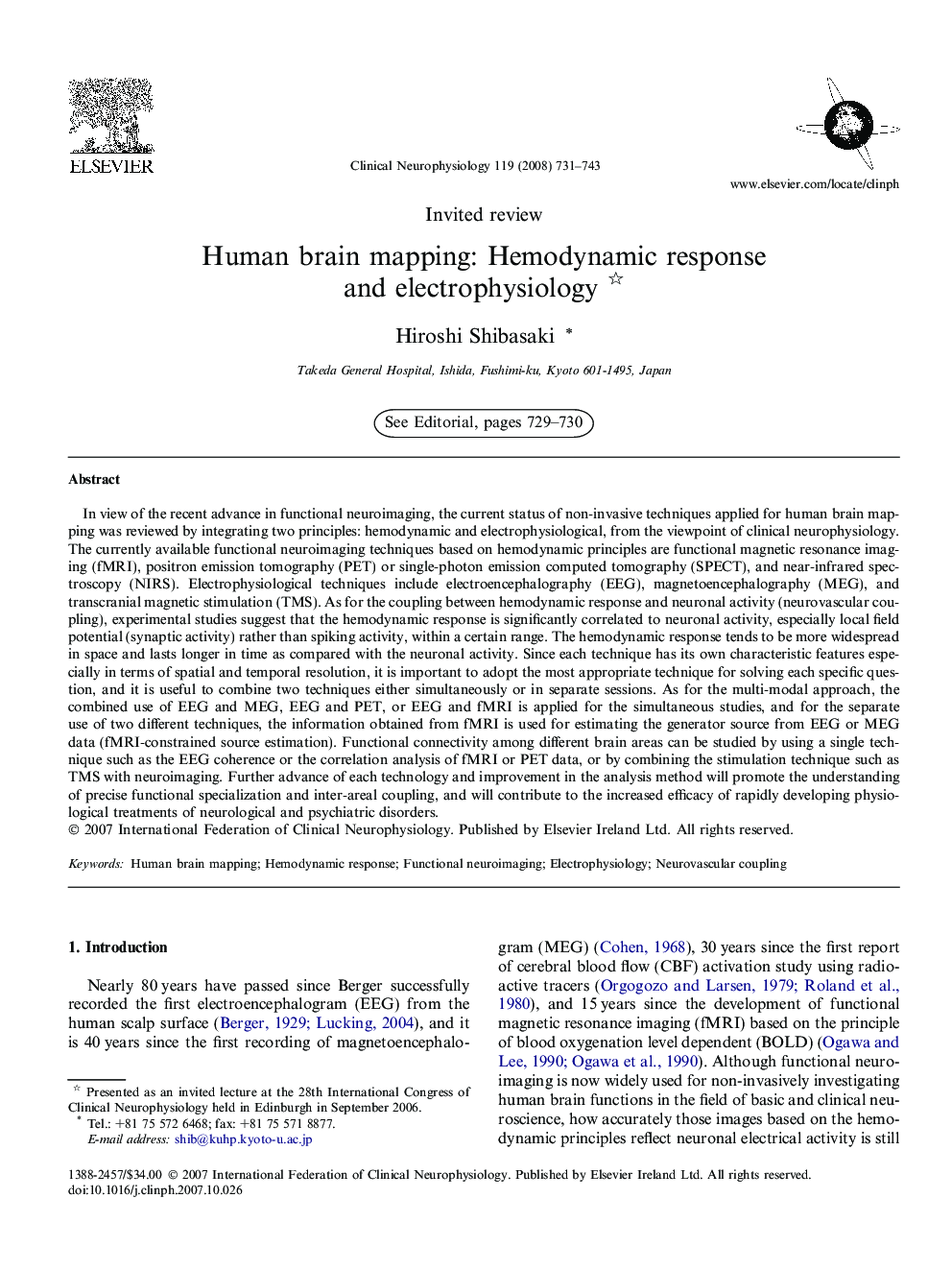| کد مقاله | کد نشریه | سال انتشار | مقاله انگلیسی | نسخه تمام متن |
|---|---|---|---|---|
| 3046487 | 1185043 | 2008 | 13 صفحه PDF | دانلود رایگان |

In view of the recent advance in functional neuroimaging, the current status of non-invasive techniques applied for human brain mapping was reviewed by integrating two principles: hemodynamic and electrophysiological, from the viewpoint of clinical neurophysiology. The currently available functional neuroimaging techniques based on hemodynamic principles are functional magnetic resonance imaging (fMRI), positron emission tomography (PET) or single-photon emission computed tomography (SPECT), and near-infrared spectroscopy (NIRS). Electrophysiological techniques include electroencephalography (EEG), magnetoencephalography (MEG), and transcranial magnetic stimulation (TMS). As for the coupling between hemodynamic response and neuronal activity (neurovascular coupling), experimental studies suggest that the hemodynamic response is significantly correlated to neuronal activity, especially local field potential (synaptic activity) rather than spiking activity, within a certain range. The hemodynamic response tends to be more widespread in space and lasts longer in time as compared with the neuronal activity. Since each technique has its own characteristic features especially in terms of spatial and temporal resolution, it is important to adopt the most appropriate technique for solving each specific question, and it is useful to combine two techniques either simultaneously or in separate sessions. As for the multi-modal approach, the combined use of EEG and MEG, EEG and PET, or EEG and fMRI is applied for the simultaneous studies, and for the separate use of two different techniques, the information obtained from fMRI is used for estimating the generator source from EEG or MEG data (fMRI-constrained source estimation). Functional connectivity among different brain areas can be studied by using a single technique such as the EEG coherence or the correlation analysis of fMRI or PET data, or by combining the stimulation technique such as TMS with neuroimaging. Further advance of each technology and improvement in the analysis method will promote the understanding of precise functional specialization and inter-areal coupling, and will contribute to the increased efficacy of rapidly developing physiological treatments of neurological and psychiatric disorders.
Journal: Clinical Neurophysiology - Volume 119, Issue 4, April 2008, Pages 731–743